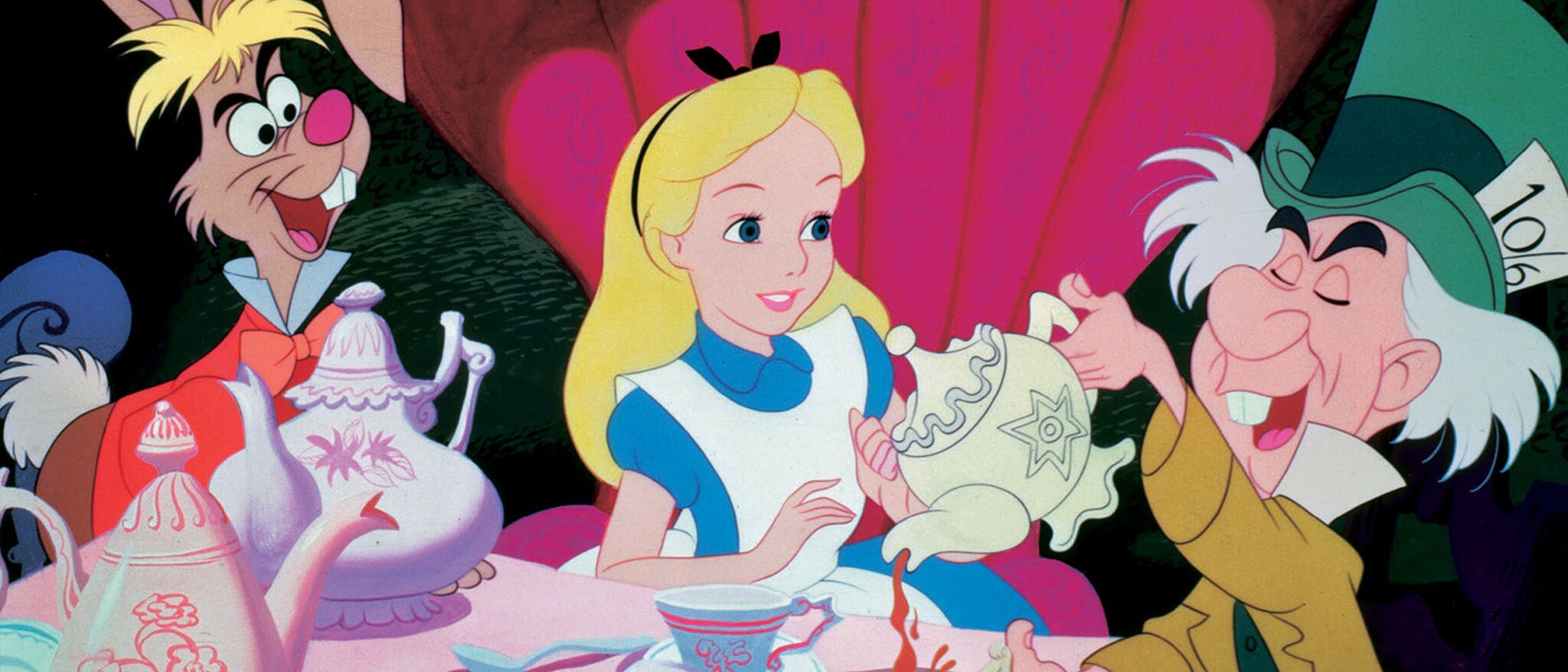Alice in Wonderland: whackiness in every adaptation
Alice in Wonderland: strange new worlds
The kookiness and nonsense of Alice in Wonderland is precisely what makes it such a wonderful story. Lewis Carroll was interested in telling the story of a young girl, and her encounters with a strange world, but also interested in redefining the ways in which we might tell a story. Alice in Wonderland does have a linear narrative structure in the sense that we move relatively logically from one scene to another. In other ways, however, the story we are being told does not necessarily have a clear direction. Alice is indeed wandering in Wonderland, following characters she meets, pulling at narrative threads with no particular aim or direction. And as readers, we’re invited to escape in a similar way. We’re invited to simply follow the story in whatever direction it might take us, and not to concern ourselves with waiting for a clear moral or structure. By the time we get to the end of the story, I’m not sure we can necessarily say we’d feel we’ve learnt anything profound, but I think the escapism we can enjoy from Alice in Wonderland is worth it, at the end of the day.
Some people have mixed opinions about Tim Burton’s Alice in Wonderland, particularly in comparison to the earlier Disney animated adaptation. The two films are, of course, aesthetically very different from each other in a variety of important ways. As always, this isn’t about one version being better than the other, but instead about finding new things to appreciate in all versions. Animation works particularly well for Alice in Wonderland because it embraces and embodies that core sense of fantasy and plasticity of imagination. From the outset, we’re thrown into a world that is deliberately unreal, that has been crafted in a particular way, and in a form that allows room for the non-human to take shape in its designs.
In some ways, Tim Burton’s live action film does retain some of that essence, in the use of special effects for certain characters and hair and make-up being used to create unusual faces. What Tim Burton’s film does differently - which I think really does work - is that in being a live action film, the audience finds itself caught between a sense of the real and the fantastical. There’s something very uncanny about seeing real people on screen in a fictional world that is clearly so different from our own. Particularly because the opening of Burton’s film is careful to establish the world that Alice is coming from - a stuffy, Edwardian society, full of rules and conventions and etiquette - the line between the real and the fantastical becomes very blurred. Where does reality end and Wonderland begin?
It also doesn’t hurt that Tim Burton’s idiosyncratic style leans into the nonsensical and the uncanny (with its Gothic influences) when those things are also central to Carroll’s story and its charm. What it misses that the Disney film captures more acutely, I think, is the childlike innocence of Alice’s imagination. Disney’s Alice, indeed, is a little girl who finds herself surrounded by unusual creatures and characters,whereas Burton’s Alice (Mia Wasikowska) is a young woman, still with that essential rebellious streak to her, but without the same innocence. (Instead, there’s a wariness and scepticism towards the world around her.) In some ways the scepticism of Wasikowska’s Alice is helpful as a narrative device or part of her character because the audience’s process of letting go of reality and letting the escapism of the story take us over can align with Alice’s own immersion in Wonderland. That way perhaps we can connect to Alice better as an audience, as opposed to an Alice who is already open to the strangeness of Wonderland and its inhabitants. Equally, though, perhaps being taken through the story by a child forces us to adjust our perspective to meet her, and not to compromise on our escapism. To each their own.
This blog wouldn’t be complete if I didn’t manage to shoehorn some dancing in here so I do want to make a passing reference to Christopher Wheeldon’s fabulous production of Alice in Wonderland. Wheeldon’s production makes use of the magical space and capabilities of theatre and dance, and creates a show that is the epitome of escapism. It’s beautiful and it’s barmy, it’s fabulous and fantastical; it has a tapping Mad Hatter and a Queen of Hearts in a mechanical monster of a dress. In short, it’s kind of a perfect adaptation. (Bold statement, I know!) It would seem that in every iteration of Alice in Wonderland, the attraction of the weird and wonderful is always present.
I know I said there might not be a clear moral to the story of Alice in Wonderland but I do wonder if that’s entirely true. In fact, I think there’s an important lesson to be learnt from this story about the power we allow structure and order have over our lives. Sometimes, perhaps it’s healthier for us to let go of those structures and live life raucously every once in a while. And sometimes we need to allow nonsense and silliness into our lives, to have a bit of fun, without worrying about the consequences.



Comments
Post a Comment